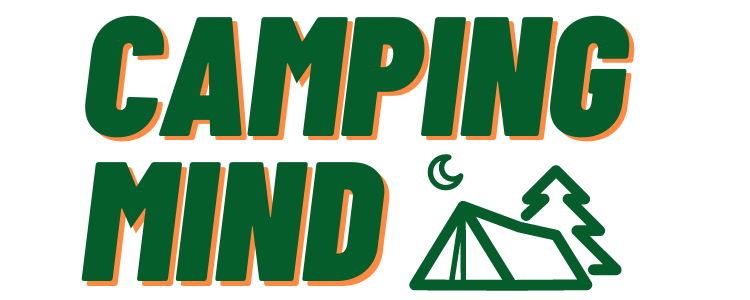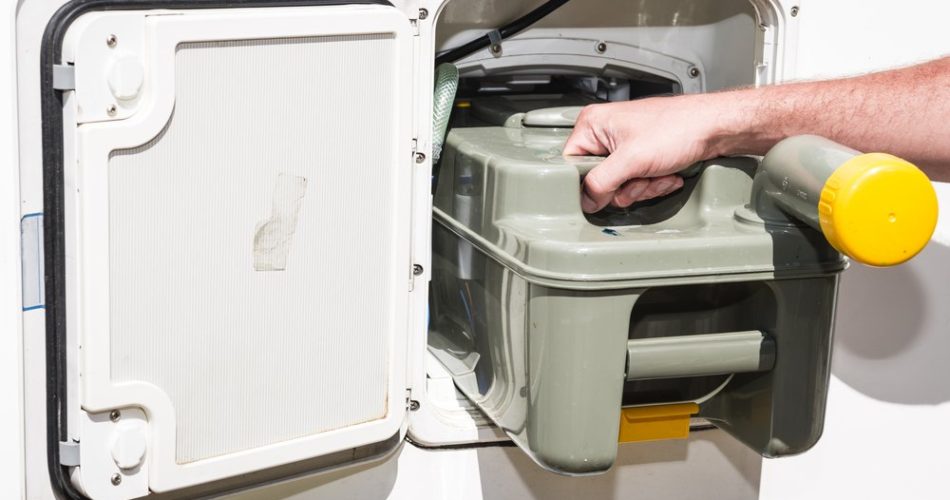New boondockers and lovers of dry camping are often bothered about how to refill fresh water tank during camping. No matter how much freshwater you think you have, your water supply is bound to go low at some point during your outdoor adventures. Fortunately, there are many places for RV enthusiasts to refill their water tanks without too much hassle. We’ll cover all of that in this article.
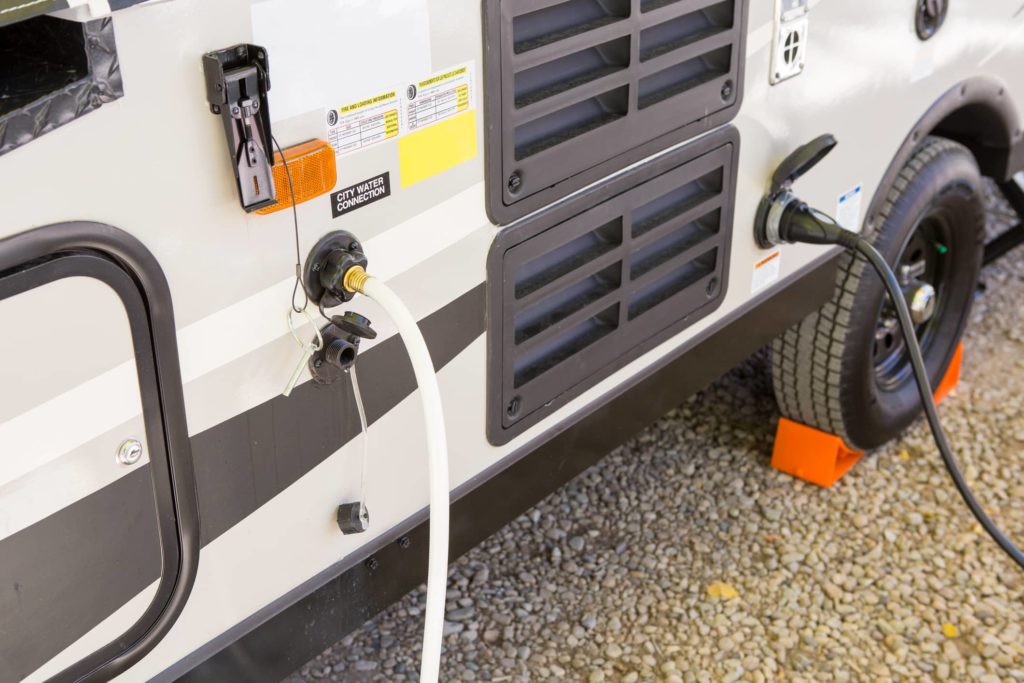
Where can I fill my RV water tank?
The answer to where and how to fill RV fresh water tank depends on where your RV is parked. This is the obvious place to start your search. If you are at a campground, for instance, you may be able to find a water fill station on the same ground where you are staying. But even if this location does not have one, you can look out for a nearby RV dump site or public dumpsite. They also allow RV owners to fill up their tanks there.
Of course, finding water is tougher if you live off the grid in the middle of nowhere. But even in this case, there is still a very good chance that you will find a dump site within driving distance of where you are camped.
The big question, though, is whether filling your water here will be free or not. Some dump stations allow you to use their water fill station for free. But many others will charge you a small fee for this. Then there’s the question of whether the water is potable (safe to drink)or not. You should always confirm this since it is advisable only to fill your RV water tank with potable water.
Another good place to check for water to fill your RV is a travel center. If you are out camping near an interstate or major highway, you may be able to find a travel center close to your location. However, they will most likely charge you for water tank refills, so keep this in mind. They are also likely to be more accessible than a dumpsite.
But how about if you are too far from travel centers or dumpsites, are there other places you can get water for your water tank near you?
A good place to check for freshwater in a situation like this is a national forest. Many national forests also have campgrounds for RVs and trailers. This means there are very good chances that they’ll have water fill stations there as well. However, in some cases, there may be restrictions that only allow campers on that site should use the water. If you’re lucky, they will be open to non-campers using their water fill.
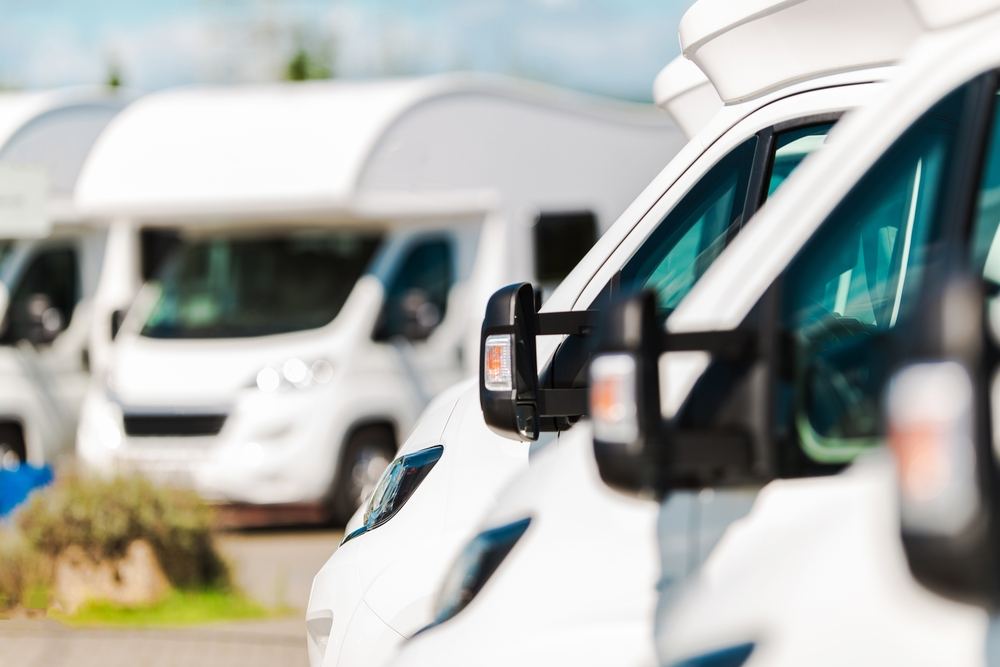
In addition to these, other places where you can find water to fill your RV water tank include:
- Gas Stations: Fuel stations are also commonplace to find portable water. Many of them have a water spigot you can hook your RV fresh water hose too. If you don’t see one around, simply ask the attendant. It just might be at the back!
- National, State, or City Parks: Parks are another place many campers rely on for fresh water. Whether it’s a national, state, or city park, you can be sure of getting water to refill your mobile trailer with. They typically have several water spigots distributed across the park. You only have to make sure the spigot you are filling from has the portable water label on it. If you’re unsure, ask the park rep.
- Truck stops: Finding fresh water at a truck stop is almost a given. Similar to campgrounds, most truck stops provide dump sites and refill stations you could easily use. Ask the attendant for assistance if you need any and make sure the water is fresh.
- Rest Stops: Many rest stops have dump sites and portable water that can be used to fill your RV tank. If you are yet to find any of the other common places for water refilling, try checking the next rest stop you see.
- Stores: Although not very common, there are stores (grocery and hardware) that provide portable water spigots for their customers. If there is one close to your camping area, you can ask the attendant while purchasing something if you can fill up your tank with water. There is a higher chance of them allowing you to use their water spigot if you’re a customer.
How to fill an RV water tank without a hose?
There is a simple workaround for filling an RV tank without a hose, and you can do that by using the tank vent. This is a pretty sleek solution that eliminates the need for a drill pump which is the commonly recommended solution for filling RVs with no gravity feed feature. If your RV is like this (uses a pressure fill system instead of the gravity feed method), you will probably be at a loss for what to do when you need to fill it up.
As mentioned, the simple workaround to this problem is to fill the tank using the tank vent. This vent is designed to remove air from the tank. This vent also releases water if the water is overfilled when filling it via the normal threaded connection. However, since the tank provides a way for air (and water) to leave the tank, you may also be able to use it to fill the tank.
To do this, simply pop out the mesh covering the vent and insert a plastic funnel into it. You can then pour the water into the tank directly from your water jug. This essentially turns the vent into a kind of gravity feed that you can fill up pretty much the same way as other RVs. The only downsides to this are that you will have to hold up the heavy water jug for as long as it takes to fill the tank.
The other alternative for this is to use a drill pump. However, you will still need a small hose connected from the pump to the RV for this method. The pump is a simple device connected to a cordless or cordless drill. You connect this pump to your water jug and then connect it to the threaded hose connection of your RV. The pump will fill the tank with water when it is turned on.
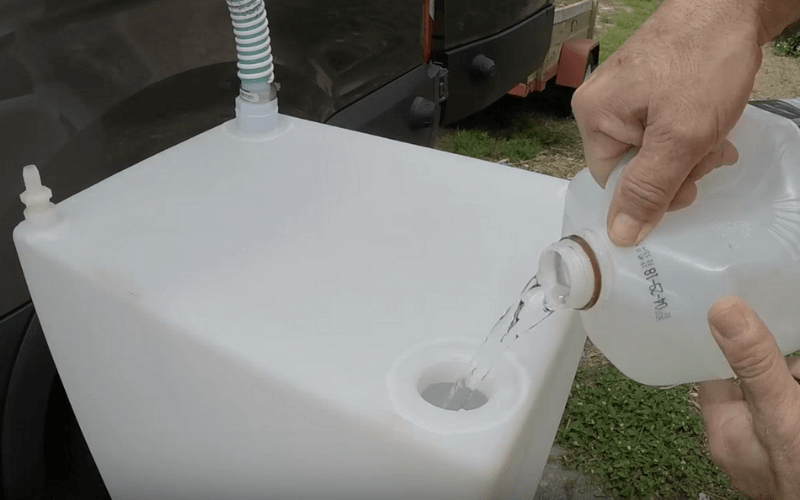
FAQs
Where to find potable water for RV?
If you are an RV enthusiast, you know how important it is to have a full fresh tank of potable water. Fortunately, several options include filling the tank with water at your campground, fuel of gas stations, rest stops, travel centers, and some (not all) dump sites.
Typically, some campsites offer the option of a direct water hookup. If you are in a place like this, then you need not worry about having potable water to drink, cook or take your bath. Your RV will simply be hooked up to this local supply, and you can take water directly from it when you need it.
You may have a separate connection designed for filling up the tank directly from what is known as city supply or local supply. And in cases where there is no separate connection, there is a valve that makes it possible to switch between the local supply and your RV water tank.
When your hose is hooked up to a local campsite supply, you essentially bypass your water tank. The pressure from the campsite spigot will push the water through the hose into your RV water connection each time you turn on a faucet in your camper.
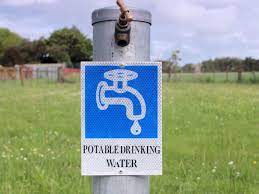
However, as convenient as this sounds, you don’t always have this option. While some campgrounds may indeed have a potable water supply, you may not be able to hook your RV directly to it this way. Still, almost every campground offers potable water in some form, whether free of charge or for a small fee. But what if this isn’t possible? What are your other options for getting potable water? They include the following:
- Fuel/Gas Stations: this is one of the most common places to find potable water. When you visit a gas station, you will see a standard outside spigot, and you can just run your hose to it and fill up your tank. Chances are, you may not be allowed to fill up your RV tank with potable water. What you just have to do is fill up your gas tank. While doing that, ask the attendant if you can fill up your RV tank with some potable water at their spigot. They won’t hesitate to give you the water for free.
- Dumpsites: even if you find yourself in the middle of nowhere, there is still a chance that you get to see a dumpsite in that location. One important thing to note is that not every dumpsite has portable water available, so you need to confirm if it is potable water before you start to fill up your tank. Potable water spigots are typically colored blue or green and are likely to be clearly labeled “potable”. Non-potable ones are often colored red. You can also ask around just to be sure you are filling your tank with good water.
- Buying potable water at a store: another way to refill camper fresh water tanks while camping is by using portable tanks filled with fresh drinking water bought at the store. These tanks are usually made of plastic and have a spout that you can attach to your RV water tank opening. They also come with instructions for how much space in gallons each tank will fill up.
- Rest Stops: you can get potable water for your RVs at rest stops. However, not all rest stops have a site to hook up a hose to fill a tank. If there is a rest stop around where you are camp and need fresh water for your RV, it is worth giving this a shot.
- City, County/State Parks: usually, city, county, or state parks have dumpsites or campgrounds and a separate potable water station, do not expect it to come for free. There’s typically a small fee to dump or refill your tank, but you will certainly get to refill your RV tank with potable water
How do RVs get water?
A Recreational Vehicle has a freshwater system that includes a tank as the key water source for drinking, cooking, bathing, using the toilet, or dishwashing. This water can be sourced directly from the campground or other sources. The RV water tank can be filled with water from a water faucet. It can also be refilled with a pump or refilled through gravity.
The easiest way through which RV’s get water is by hooking up directly to a local supply (otherwise known as city supply) in the campsite where it is parked. This does not involve filling up the tank. Rather, water is drawn directly from the local supply each time. However, this is not always available, so RVs need to get water from other sources. These include:
Refilling with water from a faucet
This involves connecting the water tank to a water faucet anywhere around your campground. For this, you need to run a hose from the faucet to the RV tank if you have a long enough hose, and you can get your RV as close to the faucet as possible. This method makes it easy to fill up your tank within a very short time.
For this method, you will need the right type of hose, a drinking water hose. These hose types are designed specifically for transferring drinkable water to the tank and will not affect the taste or quality of the water. One end of this hose (colored orange) is connected to the water source, while the other is fitted on the portable water connection on your RV. Ensure that the hose is properly secured on both ends to avoid wasting water.
This process should also be monitored. Usually, a water pressure regulator allows you to check if the water pressure from the source is right. You also have to ensure that the water level in the tank you are filling is monitored not to overfill it and wastewater. (Some tanks have overflow vales, so this might not be a problem). When the tank is full, close the tap and remove the hose
Refilling with a Pump
Another way RVs get water is by filling it with a pump. This alternative method becomes necessary when your campsite does not have a water supply, and you need to get water from elsewhere. For this method, you will need to get some water contains, which you can use to fill your RV externally. You can take the containers to the water supply and fill them with fresh water and bring it to your RV to refill the tank when it gets emptied. This is the method RVs used to get water when boondocking for an extended period.
The external container will be connected to the fresh water tank of your RV using a hose. A water pump is set up. This can be a cordless pump or a corded pump powered by the RV’s battery. When the pump is powered up, the water tank is refilled with fresh water from the container.
Using gravity to refill the water tank
This is similar to the method above. However, a pump is not used. Rather, you refill the water tank directly from the external container. This will require you to elevate the container to a level where you can easily tilt its mouth over the tank opening. Now you can proceed to pour the content of the container into the water tank.
In some cases, you might need a funnel to link the jug to the tank. This gravity-based technique is the most straightforward way an RV gets water. However, it may not always be possible for all RVs since not all RVs have a gravity-based tank opening that allows this. A possible workaround for this issue has been covered earlier in this article. So, check this video for more information.
Conclusion
There you have it! Hopefully, you know how to refill fresh water tank during camping. State parks, campgrounds, gas stations, dumpsites, rest stops, and many more are convenient places to fill your RV tank during camping. Like we have said, not all of these places offer free services, so you should have some cash in hand.
